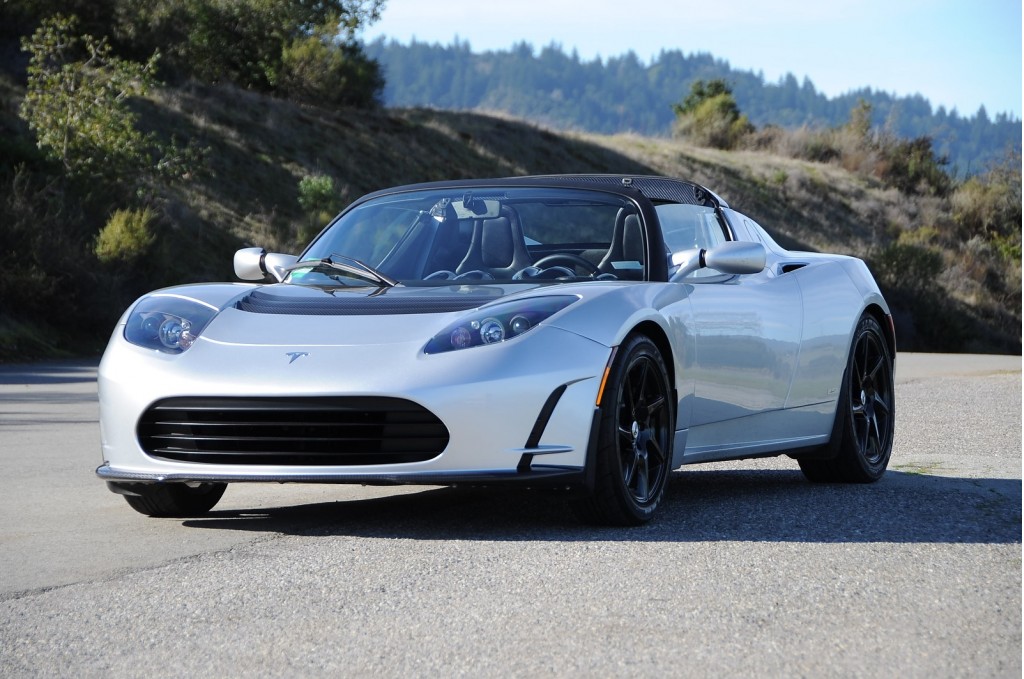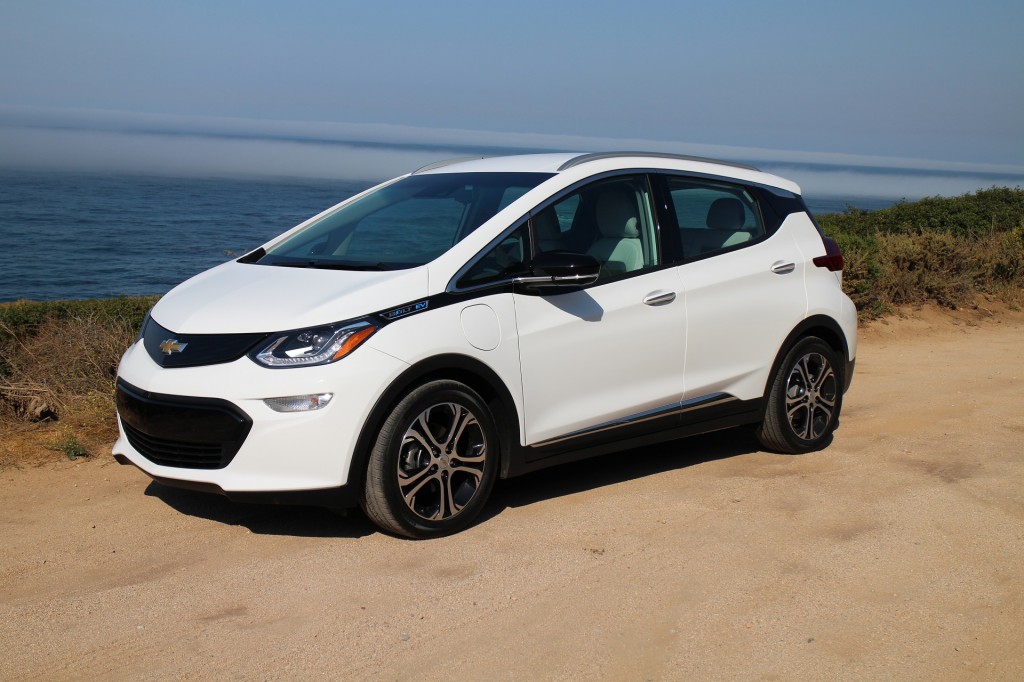One-pedal driving is rather like the experience of owning an electric car: it can be hard to appreciate until you've spend time doing it.
The phrase "one-pedal driving" refers to the ability of some electric cars to be driven almost entirely with the accelerator pedal alone.
It's a feature much prized by owners of Teslas, BMW i3s, and most recently the Chevy Bolt EV.
DON'T MISS: Chevrolet Bolt EV: Green Car Reports' Best Car To Buy 2017
And it's something that everyone should know about, even if you don't own an electric car. Even if perhaps you won't completely understand why it would be appealing until you experience it.
One-pedal driving combines conventional acceleration, using the right-hand pedal, with a much higher degree of deceleration than in a conventional car.
That means that when a driver lifts off the pedal, the car slows down more quickly than an internal-combustion-powered car would.

2011 Tesla Roadster Sport. Photo by Joe Nuxoll.
It's not found in every electric car. Some makers give their electric cars an identical driving experience to conventional vehicles, meaning they drive like an automatic-transmission car that never actually shifts.
That's most notable in the Nissan Leaf, the world's highest-volume electric car so far.
In that case, lifting off the accelerator kicks in a little regeneration, but the car largely continues to glide, slowly losing speed due to wind resistance and tire friction.
READ THIS: BMW i3: First Drive Of BMW's Radical New Electric Car (Oct 2013)
In the first Tesla Roadster, lifting off the accelerator produced strong (and occasionally sudden) regenerative braking, to recapture all possible energy as the car slowed down.
Roadster drivers quickly learned how to modulate the pedal to slow their cars to just a few miles per hour without touching the brake pedal—and "one-pedal driving" was born.
Tesla used it in the Model S too, giving drivers the option of strong regeneration or a more automatic-transmission-like feel that slows the car more gradually and adds idle creep (in which the car moves slowly forward as the brake is lifted).

2014 BMW i3 REx, Catskill Mountains, New York, Oct 2014
The BMW i3 electric hatchback that arrived in 2013 used strong regeneration as its sole driving mode, as the previous experimental Mini E and BMW ActiveE test fleets had.
BMW added a "glide" position that drivers can find by lifting off the accelerator just a bit; it neither accelerates or decelerates, but simply lets momentum carry the car down the road.
The Nissan Leaf, it should be noted, has a "L" setting for its drive selector that increases the strength of the regeneration. But it's not strong enough to permit proper one-pedal driving under many circumstances.
CHECK OUT: How To Make Your Chevy Volt Drive Like a Tesla Roadster (Oct 2010)
The Volkswagen eGolf and the 238-mile Chevrolet Bolt EV offer both options. The Bolt's default "D" position operates like an automatic-transmission car, while the "L" position provides strong regen, eliminate the idle creep, and allows one-pedal driving right down to 0 mph.
That last is important, because in the first Tesla Roadster, drivers still had to use the brake pedal to come to a complete stop below 5 to 7 mph. That's because the resistance from the electric motor would fall below the level required to slow the momentum of a rolling car.
Chevy has tuned the complex powertrain-control software to blend increasing amounts of friction braking into the waning regeneration as the car slows at a stoplight, for example.

2017 Chevrolet Bolt EV, road test, California coastline, Sep 2016
It's seamless, undetectable to the driver, and very well implemented.
And it means that Bolt EV drivers using the "L" mode and the paddle behind the steering wheel that temporarily increases regeneration even more virtually never need to lift their right foot from one pedal to another.
Once you've acclimatized, the only times you hit the brakes is for emergency situations.
It may sound a little strange, but trust us: once you try it, you'll never go back.
And then you'll start to wonder why all cars don't work that way.
_______________________________________













